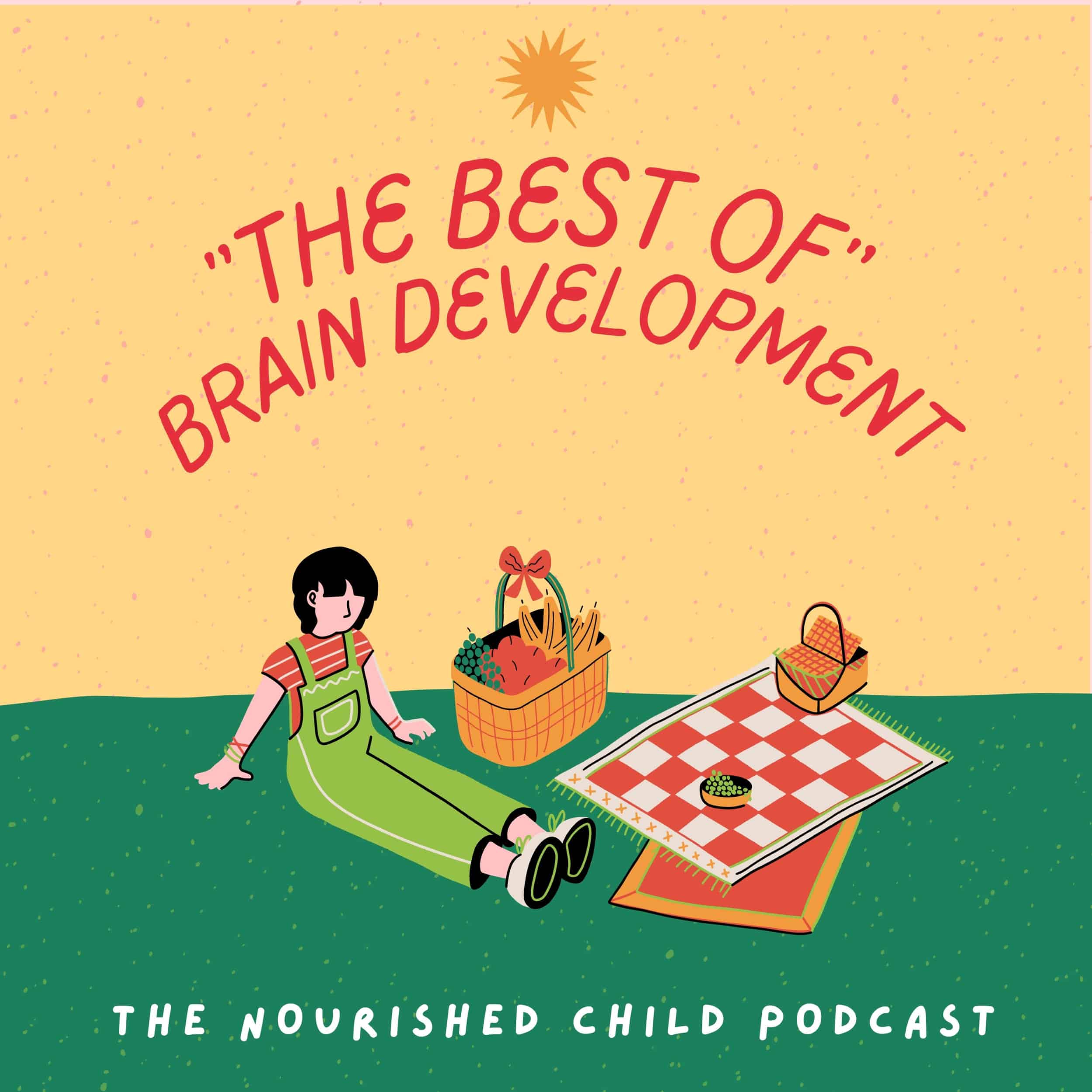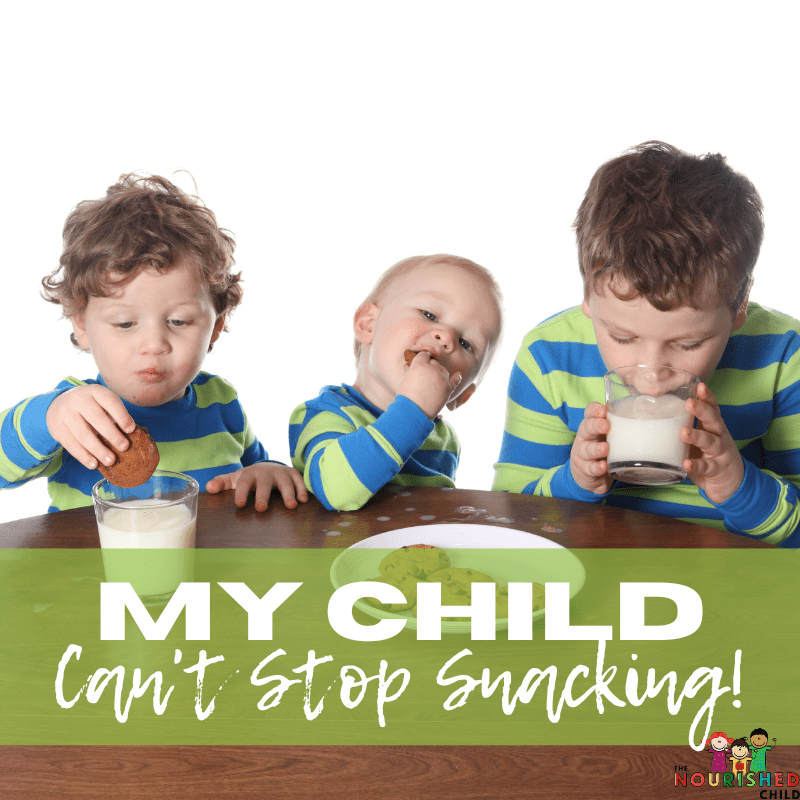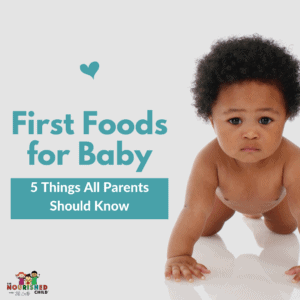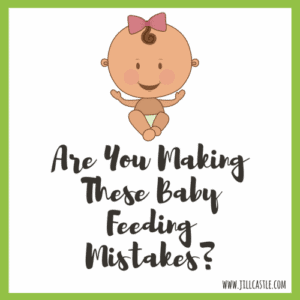Understand the Baby Growth Spurts (and Stop Worrying!)
July 8, 2022
There are about six baby growth spurts in the first 12 months. Babies need extra patience, cuddling, and food during that time. Let’s dive into what you need to know.
Your baby changes and grows rapidly during the first year. This is commonly referred to as a baby growth spurt.
After that, growth is steady until your little one hits the adolescent growth spurt when children grow several inches before reaching puberty.
During baby growth spurts, head circumference, length, and weight increase at a faster rate than usual.
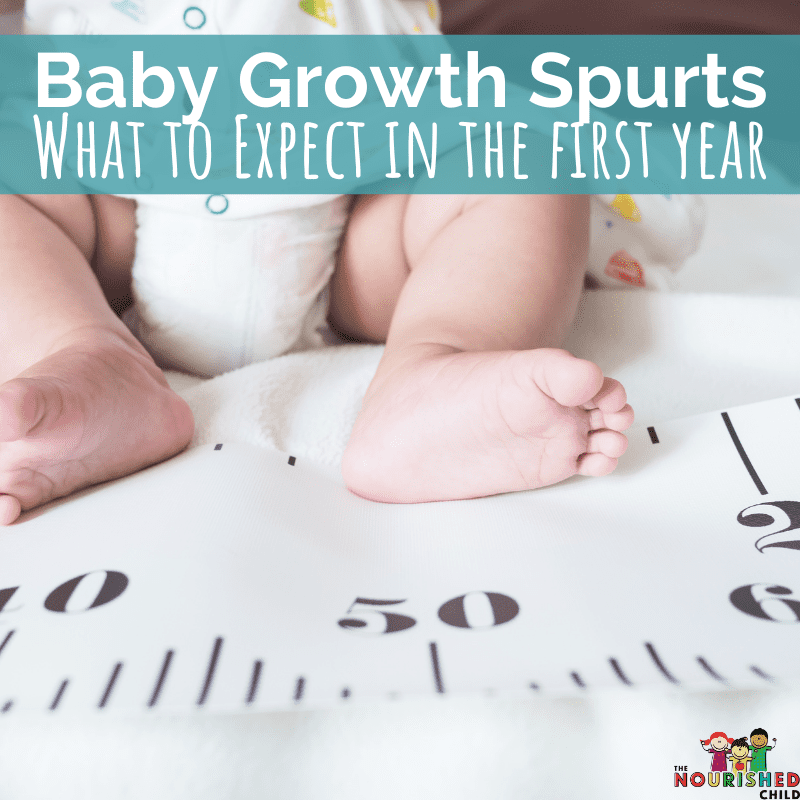
Growth spurts probably go unnoticed by many parents.
But if you’re dialed into your little one’s patterns, moods, and appetite, you’ll notice a few changes during these times.
Keep reading to learn when baby growth spurts usually happen, what to look for, and what you can do to adjust to the changes.
What Are Baby Growth Spurts?
Growth spurts are when a child reaches new height and weight milestones in a short period. Typically they happen during infancy and adolescence.
Your baby’s birth weight included extra fluid, which they lost within the first few days.
After regaining their birth weight by around day 10, most babies grow rapidly and go through several growth spurts during their first year.
Growth slows down during toddlerhood and the school-age years until the next major growth spurt in adolescence.

When Do Babies Go Through Growth Spurts?
The newborn growth spurt occurs at around 7-10 days, then growth goes into overdrive every seven to ten days until the 3-month growth spurt.
After that, the time between growth spurts stretches to a few months.
Growth spurts usually occur around 7-10 days, 2-3 weeks, 6 weeks, 3 months, 6 months, and 9 months.
Growth spurts can happen at any time, however, so don’t worry if your baby doesn’t follow the calendar!
Growth spurts last approximately 2-3 days, or up to a week.
What Are the Signs of a Newborn Growth Spurt?
Your baby napped on schedule, finished eating, and isn’t sick.
So what is going on?
Well, if your baby is around the age a growth spurt usually occurs, that’s probably it.
Here are some signs to look for:
- Increased appetite. Many babies will want to nurse more often or longer.
- Fussiness. A growing infant is hungry, tired and possibly a little uncomfortable.
- Increased napping and sleeping longer, particularly when babies are growing in length.
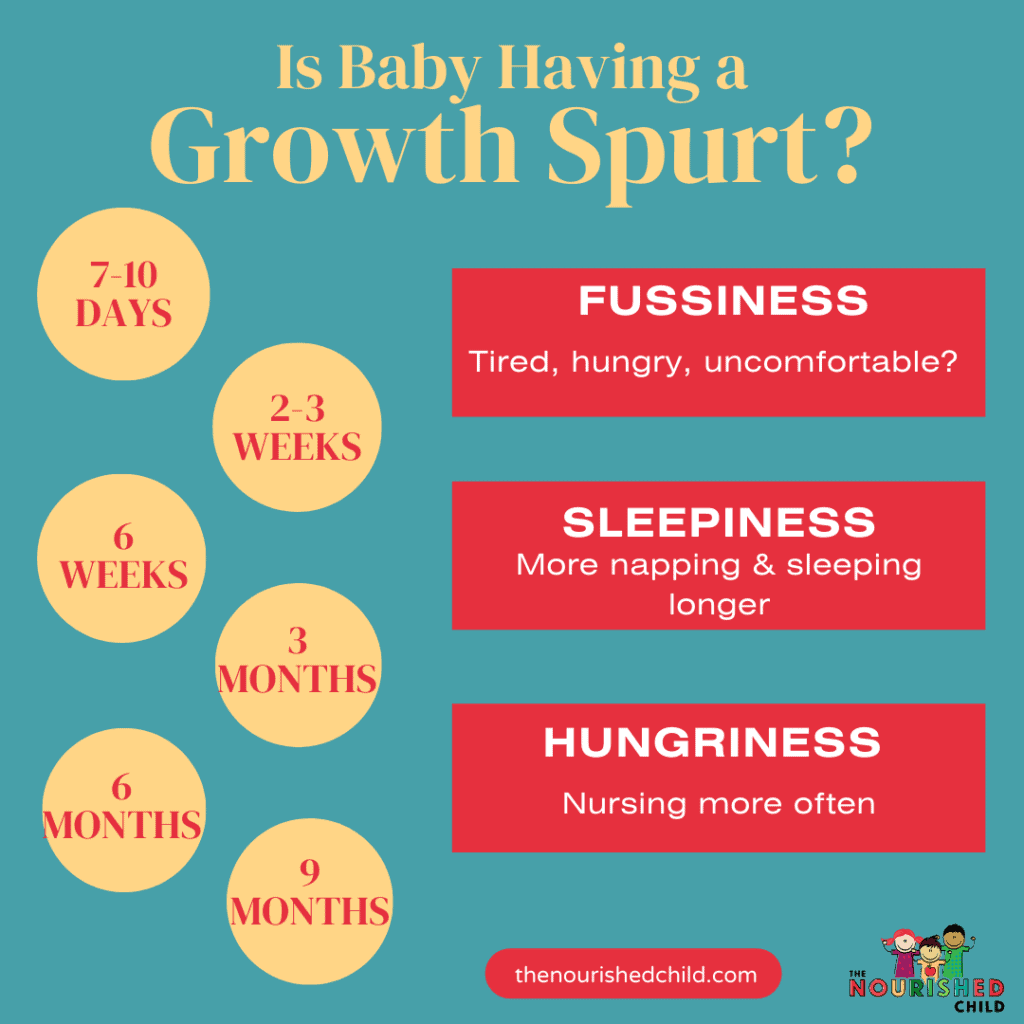
How to Tell If Your Baby’s Growth is On Track
Every baby is unique.
That’s why pediatricians monitor a child’s growth on a standard growth chart and track a child’s measurements along their own growth curve.
Monitoring your child’s growth with a growth chart helps identify any unexpected changes in your child’s pattern of growth.
For example, falling off the growth curve may indicate failure to thrive (FTT).
The World Health Organization’s (WHO) growth chart is used for babies 0-23 months and the CDC growth chart is used for children 2 years and older.
How to Deal With Your Baby’s Growth Changes
What should you do if your baby is experiencing an increase in growth? Check out some common approaches here:
1. Additional feedings to support your baby’s increased appetite
Offer more food to hungry babies during a growth spurt. As a pediatric dietitian, I suggest sticking to a baby feeding routine.
Add more food throughout the day or at meals and snacks and resist developing habits that aren’t beneficial, like night feedings.
Sample Infant Feeding Schedule
Here’s how much formula fed and breast-fed babies should eat:
Newborns: In the first few days, newborns eat about half an ounce 8 – 12 times a day.
At around 2 weeks old, infants take about 2 to 3 ounces per feeding.
2-month-olds: needs about 4 to 5 ounces per feeding every 3 to 4 hours.
4 months old: formula or breast milk increases to about 4 to 6 ounces per feeding, every 3 to 4 hours.
6 months old: Once babies start solids, they continue to take around 6 to 8 ounces of formula or breast milk every 4 to 5 hours.
6 – 12 months: Babies continue to eat about 7 – 8 ounces per feeding.
As babies eat more solids, they’ll rely on fewer bottles each day. Instead, a lot of their nourishment comes from solid foods.

2. Positive sleep habits and regular bedtimes
Babies 4 to 12 months should sleep 12 to 16 hours per 24 hours (including naps) regularly.
Growth spurts make babies even sleepier, so your little one may want to sleep even longer.
Encourage quality sleep and naps with bedtime routines so your baby gets the rest he needs.
Studies show that growing babies benefit from longer sleep, especially for growing in length.
3. Patience
Your baby may be fussier than usual. He needs extra cuddles to soothe and reassure him.
4. Self-care
Don’t forget to take care of yourself and recharge.
The extra feedings and attentiveness your baby needs can wear you down before you realize it.
Breastfeeding moms may be hungrier and thirstier because their babies are nursing more.
Don’t worry.
You should be able to produce enough milk to meet your baby’s increased needs.
As your baby nurses more, your body produces more milk.
Here’s a growth spurts summary chart and some quick tips for parents:
| Growth Spurts | 7-10 days 2-3 weeks 6 weeks 3 months 6 months 9 months |
| Signs | Baby will want to eat more often and longer Fussiness Baby will want to nap more and sleep longer |
| Tips for Parents | Offer more food at meals and snacks throughout the day Maintain sleep routines to encourage napping and restful sleep Patience and extra cuddles help soothe fussy babies Don’t forget to take care of yourself with plenty of rest, food and hydration |
Final Thoughts on Your Baby’s Growth Spurt
Growth spurt milestones help parents and pediatricians determine if a baby’s growth and development are on track.
Don’t worry if your baby isn’t growing fast or the growth spurts don’t happen when you expect them to.
Pediatricians only get the big picture by tracking your baby’s length and weight on a growth chart.
Changes in growth patterns point to a baby not eating enough or getting more nourishment than he needs.
And, catching deviations in growth right away helps to ensure healthy physical and cognitive development.

Get the Food & Nutrients for Baby’s Brain!
Want to Learn More about Growth Spurts in Children?
Have I Hit My Growth Spurt Yet? 13 Signs It’s Happening
How to Get Taller: 7 Ways to Support Your Teen’s Growth Spurt
Growth and Development in Children: What to Expect
And don’t forget to check out my Ultimate Guide to Baby Nutrition in the First Year!

